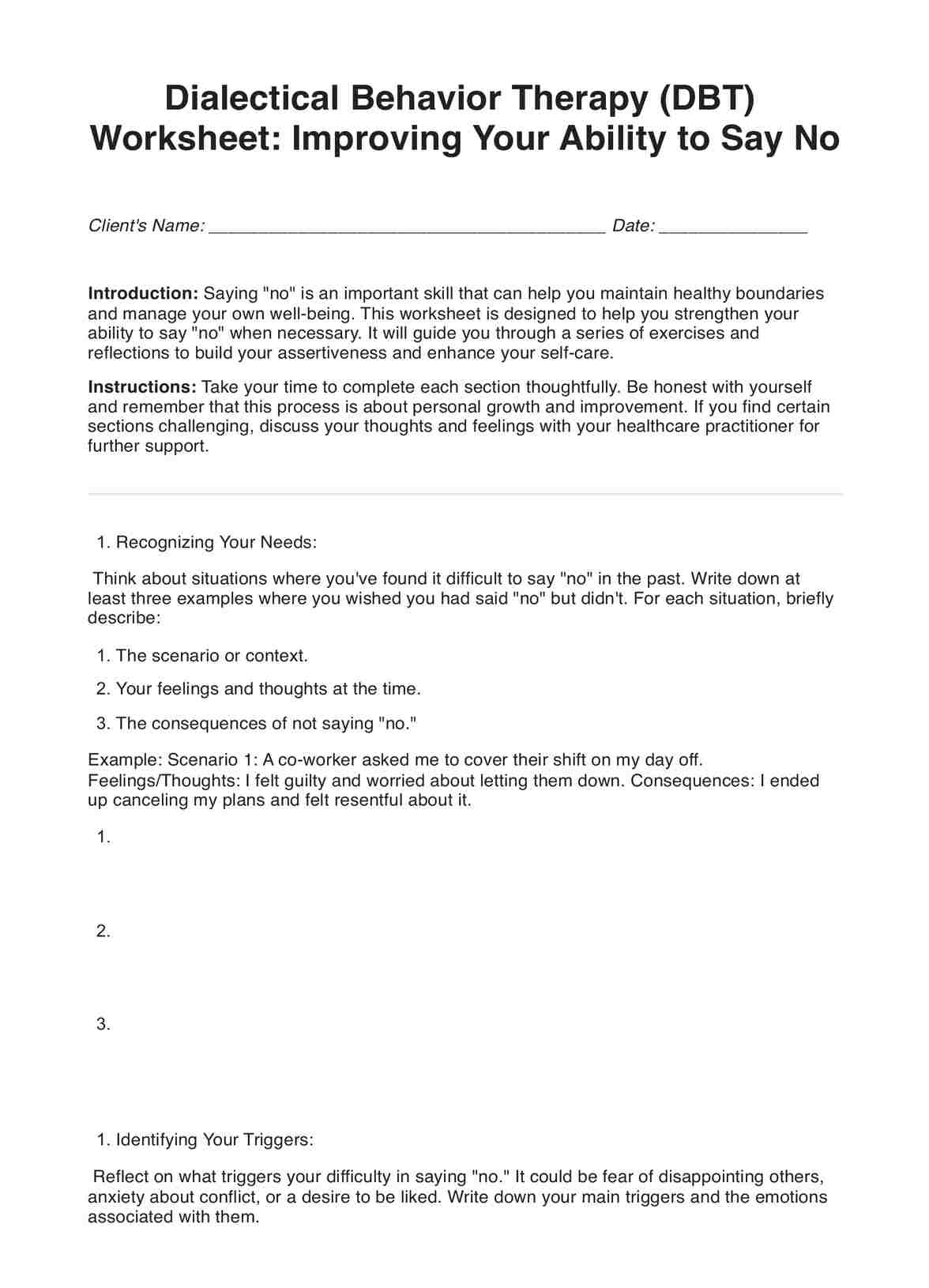This worksheet can benefit individuals from various backgrounds and situations, including those struggling with people-pleasing tendencies, fear of conflict, or difficulty setting healthy boundaries in interpersonal relationships.

Improving Your Ability to Say No DBT Worksheet
Enhance healthcare relationships with the Improving Your Ability to Say No DBT Worksheet. Build assertiveness & boundaries effectively.
Improving Your Ability to Say No DBT Worksheet Template
Commonly asked questions
The worksheet comprises several sections, including recognizing past challenges, identifying triggers, understanding personal values, practicing assertiveness, and rehearsing empowered responses. It offers a step-by-step process to build assertiveness skills.
While it can be used effectively in therapy sessions, the worksheet is also suitable for self-help and personal growth. Many individuals use it independently to work on their assertiveness and boundary-setting skills.
EHR and practice management software
Get started for free
*No credit card required
Free
$0/usd
Unlimited clients
Telehealth
1GB of storage
Client portal text
Automated billing and online payments











